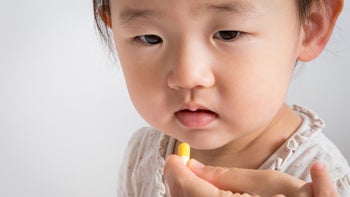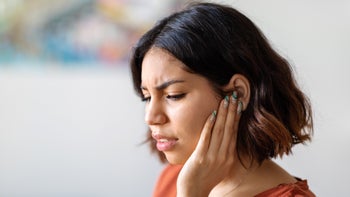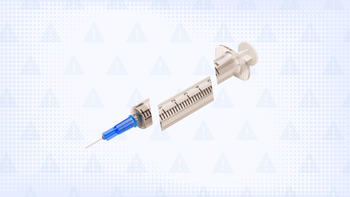
How to Treat Your Child’s Earache at Home: 5 Helpful Remedies
Key takeaways:
A mild earache can often be treated at home. Over-the-counter (OTC) pain relievers, warm and cold compresses, and elevating your child’s head are safe home remedies for earaches.
Cotton-tipped swabs (like Q-tips) and ear candling cause more harm than good. Don’t use these items if your child has an earache.
Seek care if your child has fever, ear drainage, hearing changes, or severe pain. These are signs of ear infections.
Table of contents

Earaches are no fun for kids or parents. Ear pain can be caused by an infection of the middle ear. This is called otitis media. But lots of other things can cause ear pain, like swimmer’s ear, earwax buildup, and foreign bodies in your ear. Ear pain can also be caused by sinus congestion, dental problems, and allergies. Most of the time, mild ear pain will get better on its own. If your child doesn’t have a fever, ear drainage, or severe pain, you can help your child recover at home with simple ear pain remedies.
Let’s take a look at five earache remedies that can give your child ear pain relief fast.
1. Over-the-counter pain relievers
Acetaminophen (Tylenol) and ibuprofen (Advil, Motrin) are over-the-counter (OTC) pain relievers. Studies have shown that both are effective in treating ear pain. Experts recommend acetaminophen and ibuprofen to treat mild to moderate ear pain from otitis media too. Your child might need to take antibiotics to treat their ear infection. While acetaminophen and ibuprofen can’t cure the ear infection like antibiotics can, they can keep your child comfortable while the antibiotics take effect.
Prescription Savings Are Just the Beginning
See what other benefits you qualify for—from cashback cards to cheaper insurance.

2. Warm or cold compresses
Warm and cold compresses can help treat ear pain caused by a variety of conditions. Warm compresses increase blood flow and can help relax facial muscles near the ear. This may alleviate ear pain caused by facial tension or conditions like temporomandibular joint disorder (TMJ disorder). On the other hand, cold compresses decrease inflammation, which may help relieve ear pain in kids with a middle ear infection or swimmer’s ear.
Make sure you don’t apply heat or ice packs directly to the skin. Instead, wrap the pack in a towel first. And limit use to 15 to 20 minutes at a time.
3. Elevate your child’s head
Pressure develops when there’s fluid buildup inside the middle ear. Infections, colds, and even allergies can cause fluid to build up in the middle ear space. Pressure in the middle ear can lead to ear pain. This pressure may get worse when your child lies down. Help your child by keeping them in a position that reduces ear pressure, especially during sleep, by trying the following:
Elevate their head by propping it up with pillows.
Have them lay on their side with the affected ear up.
This position may help fluid in the middle ear to drain.
Keep in mind that children younger than 1 year old should not be propped up with pillows. Pillows create an unsafe sleep environment for babies which can increase the risk of sudden infant death syndrome (SIDS).
4. Fluids
Make sure your child drinks plenty of fluids if they have ear pain because of increased ear pressure and fluid. Some ear, nose, and throat (ENT) specialists think that staying well-hydrated can help middle ear infections clear up faster. The idea is that drinking fluids keeps mucus thin so that it can more easily drain out of your middle ear. Staying hydrated is important for other reasons too. If your child has a fever, they are losing fluid by sweating, and they may not be eating or drinking much. This can lead to dehydration, which can make them feel worse.
5. Hydrogen peroxide
If your child’s earache is caused by earwax clogging the ear canal, using an earwax softener may help. Hydrogen peroxide is generally safe to use, even if your child has ear tubes (tympanostomy tubes). In fact, hydrogen peroxide has been studied as an effective treatment for clogged ear tubes.
But sometimes, hydrogen peroxide can cause irritation of the skin and make ear pain worse. Talk to your child’s pediatrician if you aren’t sure whether it’s safe for your child to try hydrogen peroxide.
To try this remedy:
Get a hydrogen peroxide 3% solution OTC.
Use a dropper to place 5 drops in the painful ear.
Let it sit for a few minutes.
Then, have your child tilt their head to let the hydrogen peroxide drain out.
What should you avoid when treating your child’s ear pain?
There are lots of other home remedies meant to treat earaches. But how safe and effective are they? Let’s look at some earache remedies to avoid.
Q-tips
Healthcare professionals sometimes say (only partially in jest), “Never stick anything smaller than your elbow in your ear.” But this advice is important to avoid injury to your ear.
Cotton-tipped swabs, like Q-tips, fall into this category. Earwax doesn’t need to be removed unless it’s so severely packed that it affects hearing or causes pain. Plus, using a Q-tip can end up pushing wax further into your ear. Q-tips can also bring bacteria into your ear and lead to infection of the ear canal (otitis externa).
Ear candles
Ear candling involves placing a hollow tube of fabric covered in wax inside the ear canal. The candle is then lit and left to burn. Ear candling has been promoted as a way to remove earwax, but there’s no evidence that it works. And it can cause serious burns. Over 10% of people in one study were burned while using ear candles.
Other possible side effects of ear candling include:
Blockage of the ear canal
Hearing loss
Ear canal infection
Eardrum perforation
Ear drops
Many ear drops that are safe to use in the outer ear can damage the middle ear. While these drops might help pain caused by outer ear conditions, they’re not safe to use if your child has a ruptured eardrum or ear tubes. This includes OTC ear drops and herbal ear drops too.
Check with your child’s pediatrician before using ear drops if your child has ear tubes. It’s best to get your child’s ears checked to make sure they don’t have a ruptured eardrum before using ear drops, especially if you think your child could have an ear infection.
Aspirin
Children shouldn’t take aspirin for pain relief. Aspirin can cause a rare, but serious condition called Reye’s syndrome. Reye’s syndrome can lead to serious liver and brain damage in children with viral illnesses who are treated with aspirin. Children under the age of 16 shouldn’t use aspirin unless they have been specifically instructed to do so by their pediatrician. Stick to acetaminophen or ibuprofen for pain relief.
When should you seek medical care for your child’s ear pain?
It’s safe to treat mild earache at home and watch your child to see if their symptoms improve over 48 hours. But there are some situations in which it’s necessary to seek care right away.
Get help right away if your child has:
Something stuck in their ear or you think they put something in their ear
An injury to their ear
Bleeding from their ear
Bruising or swelling of their outer ear after an injury
Pain or hearing changes after they’ve used a cotton-tipped swab (Q-tip)
Fever
Severe pain
Ear drainage
Hearing changes
Swelling or redness of the skin behind the ear
Their ear looks like its pushed forward
Headaches
Confusion or drowsiness
These are signs of more serious injuries and infections that need immediate care.
The bottom line
Most mild ear pain will get better on its own. Home remedies for ear pain are a great option for most children. Tylenol, ibuprofen, warm and cold compresses, and elevating their head to relieve pressure can provide fast earache relief. But if your child develops signs of more severe infection like a high fever or severe pain, or if symptoms aren’t improving after 2 days, they should be seen by their healthcare professional. Avoid remedies like using Q-tips and ear candles, which can make the problem worse.
Why trust our experts?



References
Becker ENT & Allergy. (n.d.). The power of home remedies: Effective solutions for ear infections in kids. Penn Medicine.
Bertin, L., et al. (1996). A randomized, double-blind, multicentre controlled trial of ibuprofen versus acetaminophen and placebo for symptoms of acute otitis media in children. Fundamental & Clinical Pharmacology.
Brenman, A. K., et al. (1986). Use of hydrogen peroxide to clear blocked ventilation tubes. American Journal of Otology.
Framingham Pediatrics. (n.d.). Ear infections.
Greater Knoxville Ear Nose & Throat. (2023). The benefits of staying hydrated for your ENT health.
KidsHealth. (2023). Dehydration. The Nemours Foundation.
Lieberthal, A. S., et al. (2013). The diagnosis and management of acute otitis media. Pediatrics.
Northern Health. (2018). Hydrogen peroxide ear drops.
Rafferty, J., et al. (2007). Ear candling: Should general practitioners recommend it? Canadian Family Physician.
Ramakrishnan, K., et al. (2007). Diagnosis and treatment of otitis media. American Family Physician.
Sarrell, E. M., et al. (2003). Naturopathic treatment for ear pain in children. Pediatrics.
Spraggs, P. D. R., et al. (1995). A prospective randomised trial of the use of sodium bicarbonate and hydrogen peroxide ear drops to clear a blocked tympanostomy tube. International Journal of Pediatric Otorhinolaryngology.













